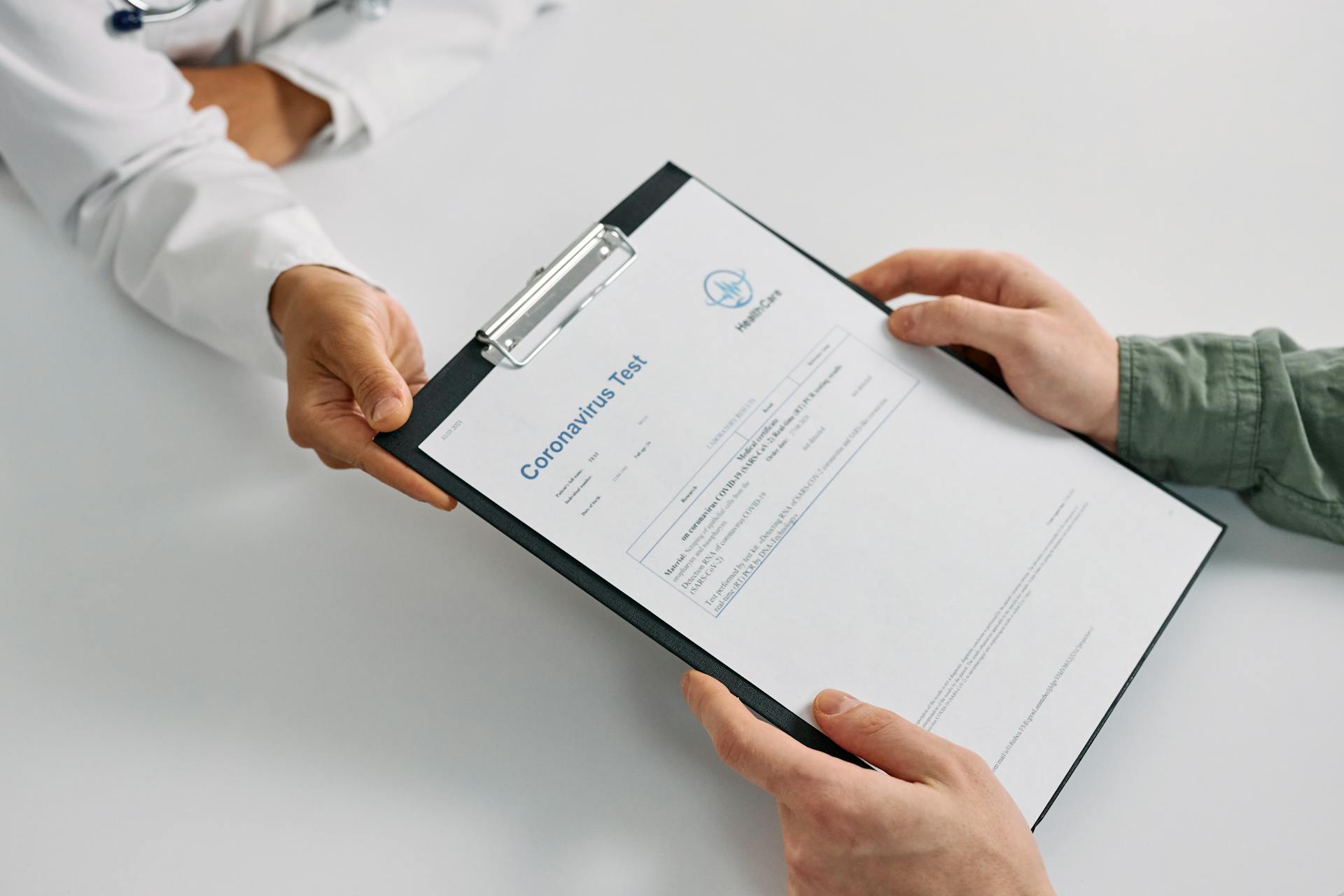
Medical billing is the process of submitting and following up on claims with health insurance companies for payment. Medical billing involves a series of steps that ensure accurate and timely payment.
The first step in medical billing is coding, which involves assigning specific codes to each diagnosis and treatment. These codes are used to identify the services provided and the corresponding payment.
Medical billing professionals must be familiar with various coding systems, including ICD-10, which is used for diagnoses, and CPT, which is used for procedures. These codes are crucial for accurate billing and payment.
Accurate and timely payment of medical bills is critical for healthcare providers to stay financially stable and deliver quality care.
History of Medical Billing The History
In 18th century England, physicians were not allowed to charge fees or collect payments, instead relying on "honoraria", voluntary payments inspired by a Roman custom.
Physicians were divided into two groups: non-surgeon physicians, who received honoraria, and surgeons, who were treated as a "public calling" with capped fees.
The American colonies abandoned these English principles in the 19th century, allowing physicians to use standard contract and commercial law to set and collect fees.
In the U.S., courts viewed medical services like goods with fixed prices, enabling physicians to sue for outstanding payments and set terms independently.
Before health insurance became widespread, doctors charged patients according to what they thought each patient could afford, a practice known as sliding fees.
Sliding fees became a legal rule in the 20th century, but eventually changed with the introduction of health insurance in the mid-20th century.
The introduction of health insurance standardized fees by negotiating fee schedules, eliminating additional charges and restricting discounts.
Medical billing was once done almost entirely on paper, but with the advent of medical practice management software, it's now possible to efficiently manage large amounts of claims.
Medical Billing Process
The medical billing process involves navigating between patients, healthcare providers, and insurance companies to arrange for reimbursement of healthcare services. This process can take anywhere from a few days to several months, making accurate billing and timely follow-up top priorities.
Medical billers play a crucial role in this process, gathering necessary information from patients, reviewing medical charts and insurance plans, and generating medical claims. They then check for accuracy and submit claims to payers, who must approve them within 30 or 45 days, depending on the state.
Medical billers must be well-versed in their organization's payer mix, familiar with various payers and health plans, and aware of filing deadlines and preauthorization requirements. They also need to communicate with physicians to clarify diagnoses or obtain more information about patient encounters, and be familiar with CPT, HCPCS Level II, and ICD-10 codes.
Here's a breakdown of the medical billing process:
- Pre-registration: Patients complete required forms and confirm patient information, including home address and insurance coverage.
- Front-end medical billing: Staff verifies insurance eligibility, submits prior authorizations, and confirms patient financial responsibility.
- Charge entry: Staff enters charges and payments into the practice management system, and reviews charge capture to ensure all charges and receipts are added.
- Claim generation: Billers compile charges, revenue codes, CPT, HCPCS Level II, and ICD-10 codes to create a claim, which is then sent to third-party payers for reimbursement.
- Claim scrubbing: Billers run claims through claim scrubbing software to ensure all procedure, diagnosis, and modifier codes are present and accurate.
- Claim submission: Claims are submitted electronically to payers, either directly or through a clearinghouse, which reviews and edits claims before sending them to payers.
Why We Bill
Medical billing is a complex process that involves three main parties: the patient, the healthcare provider, and the insurance company. The medical biller's job is to negotiate and arrange for payment between these three parties.
The patient is the first party, and they may only have direct interaction with one healthcare provider. The healthcare provider is the second party, and it includes hospitals, physicians, physical therapists, emergency rooms, and outpatient facilities.
The medical biller ensures that the healthcare provider is compensated for their services by billing both patients and payers. This is why we bill, to allow healthcare providers to get paid for their work.
The biller collects information about the patient and their procedure, and compiles it into a bill for the insurance company. This bill is called a claim, and it contains the patient's demographic information, medical history, and insurance coverage.
The claim also includes a report on what procedures were performed and why. This information is crucial for the insurance company to determine how much they should pay for the services rendered.
The Process
The medical billing process is a complex system that involves multiple parties, including patients, healthcare providers, and insurance companies. Medical billers play a crucial role in navigating this system to ensure that healthcare providers are reimbursed for their services.
Medical billers start by collecting necessary information from patients, including demographics, medical history, insurance coverage, and the services or procedures they received. They review patients' medical charts and insurance plans to verify coverage of services.
The medical billing process involves several stages, including front-end and back-end billing. Front-end billing takes place pre-service, or before the patient sees the doctor, and involves patient-facing activities such as verifying insurance eligibility and collecting copays. Back-end billing occurs after the provider sees the patient and involves claims management and reimbursement.
Medical billers use various tools and software to streamline the claims process, including clearinghouses that review and edit claims for compliance with payer policies and federal regulations. They also use claim scrubbing software to identify and correct errors in claims.
Here's a breakdown of the key steps in the medical billing process:
- Collecting patient information and verifying insurance coverage
- Generating medical claims and checking for accuracy
- Submitting claims to payers and tracking their status
- Reconciling patient charges and payments
- Following up with payers and patients to resolve any issues
Medical billers must be familiar with various codes and regulations, including CPT, HCPCS, and ICD-10 codes, to ensure that claims are accurate and compliant. They must also communicate with physicians to clarify diagnoses and obtain more information about patient encounters.
In summary, the medical billing process is a complex system that requires attention to detail and a thorough understanding of medical codes and regulations. Medical billers play a vital role in ensuring that healthcare providers are reimbursed for their services and that patients receive accurate and timely billing information.
Electronic Medical Billing
Electronic medical billing is a crucial aspect of the medical billing process. It involves sending billing claims for services via electronic means, as required by HIPAA law 1996.
A practice management/EM software can automate the transmission of electronic claims, hiding the process from the user.
Prior to billing a patient, care providers can use software to check the patient's insurance eligibility with their insurance company. This process uses the same standards and technologies as electronic claims transmission, with a format known as X12-270 Health Care Eligibility & Benefit Inquiry transaction.
A response to an eligibility request is returned by the payor through a direct electronic connection, or more commonly, their website, in the form of an X12-271 "Health Care Eligibility & Benefit Response" transaction.
The first transaction for a claim for services is known technically as X12-837 or ANSI-837, which contains a large amount of data regarding the provider interaction, as well as reference information about the practice and the patient.
The payor will respond with an X12-997 transaction, acknowledging that the claim's submission was received and accepted for further processing.
The X12-835 transaction shows the line-items of the claim that will be paid or denied, with the amount if paid, or the reason if denied.
Payment and Insurance
Payment and insurance are two crucial aspects of medical billing. Providers must understand the insurance plans and laws governing them to ensure timely payment. Large insurance companies can have up to 15 different plans contracted with one provider, and each plan includes details such as fee schedules and timely filing guidelines.
Providers typically charge more for services than what's negotiated by the physician and insurance company, resulting in a reduction in expected payment. This reduction is known as an "allowed amount." For example, a psychiatrist may charge $80.00 for a medication management session, but the insurance may only allow $50.00, resulting in a $30.00 reduction.
Insurance payments are further reduced if the patient has a copay, deductible, or coinsurance. A copay is a fixed amount the patient pays for a service, while a deductible is the amount the patient must pay before insurance kicks in. Coinsurance is a percentage of the allowed amount the patient must pay. For instance, a 20% coinsurance would have the patient owing $10.00 and the insurance company owing $40.00.
Here's a breakdown of how insurance payments are affected by copays, deductibles, and coinsurance:
By understanding these payment and insurance concepts, medical billers can create accurate and efficient billing processes, reducing the risk of errors and ensuring timely payment for healthcare providers.
Payment
Payment can be a complex process, but understanding the basics can help you navigate it more smoothly. Large insurance companies can have up to 15 different plans contracted with one provider.
To receive payment for services, front-office staff must confirm that the services are covered by the patient's health plan. This step, which can be conducted by phone or by an insurer's electronic eligibility verification tool, verifies eligibility effective dates, patient coinsurance, copay, deductible, and plan benefits as they pertain to specialty and place of service.
The amount that is paid by the insurance is known as an "allowed amount." For example, although a psychiatrist may charge $80.00 for a medication management session, the insurance may only allow $50.00, and so a $30.00 reduction (known as a "provider write off" or "contractual adjustment") would be assessed.
Here's a breakdown of how payment is typically processed:
- Insurance payment is reduced if the patient has a copay, deductible, or a coinsurance.
- If the patient has a $5.00 copay, the physician would be paid $45.00 by the insurance company.
- If the patient has a $500.00 deductible, the contracted amount of $50.00 would not be paid by the insurance company until the deductible is met.
- Coinsurance is a percentage of the allowed amount that the patient must pay, often applied to surgical and/or diagnostic procedures.
Providers typically charge more for services than what has been negotiated by the physician and the insurance company, so the expected payment from the insurance company for services is reduced.
Credit Balances
Credit balances pose a significant risk to provider organizations, as they can lead to litigation and civil monetary fines if not handled promptly.
Overpayments from credit balances must be identified and refunded to the correct parties, as failure to do so can have serious consequences.
Receiving money for medical services in excess of charges can occur due to various events, and medical billing staff must stay vigilant to prevent overpayments from slipping through the cracks.
Prompt refunds of overpayments are essential to avoid financial penalties and reputational damage.
Medical Billing Services
Medical billing services can be a huge time-saver for medical staff, allowing them to focus on patient care rather than paperwork.
Some providers outsource their medical billing to third-party companies, which provide a range of services including regular invoicing and insurance verification.
By outsourcing medical billing, practices can increase efficiency and free up staff to focus on more important tasks, ultimately enabling them to grow and expand their services.
Here are some of the key services that can be outsourced to medical billing companies:
Services
Medical billing services can include a range of tasks, such as regular invoicing, insurance verification, collections assistance, referral coordination, and reimbursement tracking.
Medical billers work closely with patients, healthcare providers, and insurance companies to arrange for reimbursement of healthcare services. They collect necessary information, including patient demographics, medical history, insurance coverage, and what services or procedures the patient received.
Some common billing services include:
Medical billers also prepare patient bills, which involves deducting the amount covered by insurance from the cost of the procedure or service, factoring in copays and deductibles, and adding outstanding patient balances.
Working with Patients
Medical billers play a crucial role in ensuring patients receive accurate bills for medical services rendered. They create bills by considering the balance the patient has, adding the cost of the procedure or service, deducting the amount covered by insurance, and factoring in copays and deductibles.
Patients typically receive their bill at the end of their services, which is often prepared by the medical biller. This involves reviewing the patient's medical records and insurance plans to create an accurate bill.
Here's a breakdown of what patients can expect from their medical bill:
- Patients are typically presented with a bill at the end of their services.
- The bill includes the balance the patient has, plus the cost of the procedure or service.
- The bill also deducts the amount covered by insurance.
- Copays and deductibles are factored into the bill as well.
Medical billers also work daily with patient medical records, abstracting information to create accurate medical bills. This requires reviewing patients' medical charts and insurance plans to verify coverage of services.
Medical Coding
Medical coding is a crucial step in the medical billing process, and it's essential to understand what it entails. Medical coders review medical charts and extract billable information to translate into standardized codes. These codes ensure that healthcare providers receive accurate reimbursement from insurance companies.
Medical coders use procedure codes, such as CPT, HCPCS Level II, or ICD-10-PCS, to tell the payer what service the healthcare provider performed. Diagnosis codes, reported using the ICD-10-CM code set, tell the payer why the patient received the services. The ICD-10-CM code set alone has over 70,000 unique identifiers.
The World Health Organization (WHO) maintains the ICD coding system, which is used internationally in modified formats. Medical coders also use CPT modifiers to describe services in greater specificity, including if providers performed multiple procedures, the reason for a service, and where on the patient the procedure occurred.
Accurate and complete clinical documentation during the patient encounter is critical for medical billing and coding. Providers use clinical documentation to justify reimbursements to payers when a conflict with a claim arises. Medical coders review and analyze clinical documentation to connect services with billing codes related to a diagnosis, procedure, charge, and professional and/or facility code.
Coders use various code sets during this process, including ICD-10-CM and CPT codes. The American Medical Association (AMA) maintains the CPT coding system, which describes the services rendered to a patient during an encounter for private payers. The AMA publishes CPT coding guidelines each year to support medical coders with coding-specific procedures and services.
Career and Certification
If you're interested in a medical billing career, you're in luck because the demand for skilled medical billers is high. Increasing reimbursement pressures within the healthcare industry have created a need for professionals with an understanding of medical insurance, reimbursement methodologies, and the claims process.
AAPC is the largest medical coding and billing training and certification association in the world, offering flexible training options. You can prepare for your CPB certification and career in medical billing today.
To get certified as a professional biller, you'll need to learn about medical billing, coding, insurance processes, and regulatory guidelines.
Challenges and Solutions
Medical billing can be a challenging process, but it doesn't have to be. Arduous administrative work and ever-changing regulatory guidelines can slow down the process and result in lower rates of reimbursement.
The complexity of medical billing is further compounded by the need to access and manage the correct data. This can be a daunting task, especially for healthcare centers with limited resources.
Fortunately, innovative technologies like athenaOne are available to help streamline the medical billing process. By integrating healthcare platforms, healthcare centers can improve claims accuracy and stay focused on delivering excellent care to patients.
Common challenges in medical billing include:
- Arduous administrative work
- Ever-changing regulatory guidelines
- Accessing and managing the correct data
Denial Management
Denial management is a crucial aspect of medical billing, and it's essential to address denials promptly. Denials or reimbursement problems should be worked as soon as they are received from insurers.
A remittance advice provides billing staff with a denial code(s) and a brief explanation as to why the claim was denied. This information is crucial in determining the next steps.
Billing staff should review the denied claim to determine if additional information is needed or if errors need to be corrected. This review process helps identify the root cause of the denial.
Medical billers often team up with medical coders to appeal claim denials, depending on the root cause of the denial. Together, they prepare the appeal letter and refile the claims.
A/R Collections
A/R collections are a crucial step in medical billing, as they help manage delinquent accounts and prevent bad debt.
Delinquent accounts can be a significant problem, but regular communications through statements and availability to answer questions can help patients stay on track with their payments.
Patient follow-up is an essential part of A/R collections, and it can involve offering conveniences like payment plans and online payment methods to accelerate collections.
Once payment is collected, medical billers submit the revenue to accounts receivable (A/R) management, where payments are tracked and posted.
By following up with patients and providing convenient payment options, medical billers can reduce bad debt and write-offs, making A/R collections a key part of a successful medical billing process.
Solving the Challenges
Medical billing can be a daunting task, especially with ever-changing regulatory guidelines. It's a core process for healthcare centers, but it can be challenging to do accurately and efficiently.
Arduous administrative work can slow down the process. This includes tasks such as accessing and managing the correct data.
Healthcare technology can help alleviate these challenges. Innovative technologies like athenaOne are designed to streamline the medical billing process.
Here are some common challenges behind medical billing:
- Arduous administrative work
- Ever-changing regulatory guidelines
- Accessing and managing the correct data
- Other hurdles that can slow down the process
These challenges can result in lower rates of reimbursement.
Covid-19's Impact on Coding
The COVID-19 pandemic brought about significant changes to medical coding. Medical billers and coders had to quickly adapt to new codes and reimbursement policies as a result of the virus.
In March 2020, the WHO created the first ICD-10 code for COVID-19. This was a major development in the medical coding world.
The pandemic also led to an increase in electronic claims management adoption, with a 2.3 percentage point increase across the medical and dental industries in 2020. This shift towards digital claims processing was a significant change.
New ICD procedure codes related to COVID-19 were created, with at least a dozen new codes emerging. These codes were essential for accurately documenting COVID-19 and related conditions.
The pandemic also led to changes in CPT and HCPCS codes, with many updates made to document COVID-19 and related conditions. This was a significant challenge for medical billers and coders who had to quickly learn and apply these new codes.
Medical billers and coders had to work together to ensure that the medical billing and coding cycle ran smoothly, despite the challenges posed by the pandemic.
Frequently Asked Questions
Is medical billing difficult to learn?
Medical billing requires attention to detail and continuous learning, but it's a skill that can be developed with practice and training. With dedication, you can master the basics and advance in this rewarding career.
What do medical billers do?
Medical billers handle billing, insurance, and payment processing for healthcare providers, submitting claims and collecting payments from insurance companies and patients. They ensure smooth financial transactions for medical services and procedures.
How to do medical billing for beginners?
To start medical billing, register the patient, verify insurance, and record accurate notes during the encounter, then send them to your billing team for processing. Medical billing involves converting medical scripts to ICD-10 and CPT codes and adding charges to claims, but don't worry, we have a step-by-step guide to help you get started.
Sources
- https://en.wikipedia.org/wiki/Medical_billing
- https://www.aapc.com/resources/what-is-medical-billing
- https://www.medicalbillingandcoding.org/introduction-to-billing/
- https://www.techtarget.com/revcyclemanagement/feature/Exploring-the-Fundamentals-of-Medical-Billing-and-Coding
- https://www.athenahealth.com/resources/blog/what-is-medical-billing
Featured Images: pexels.com


